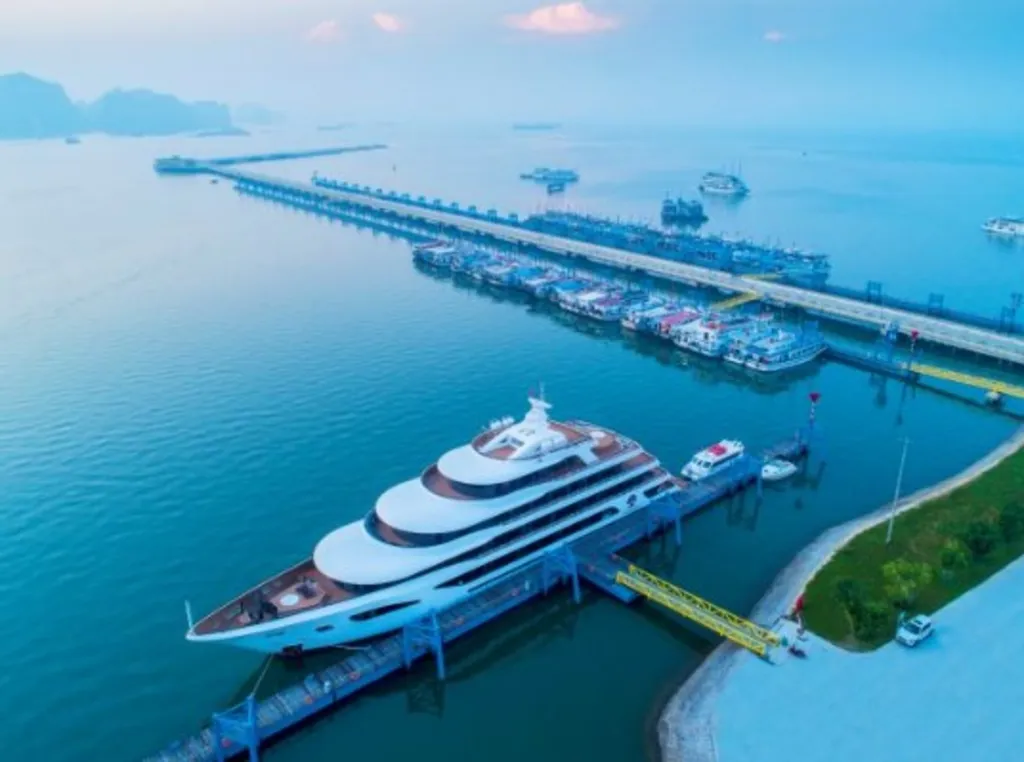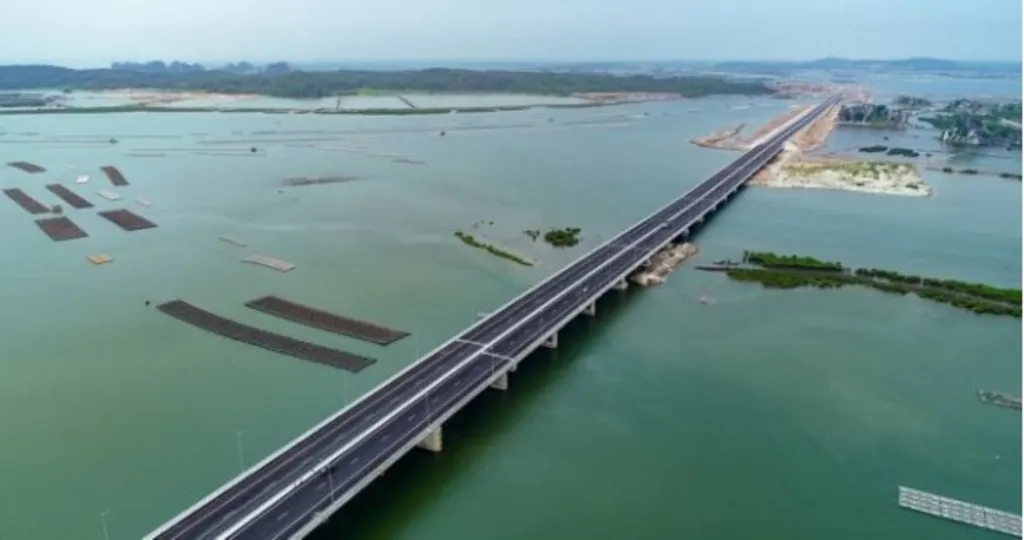 |
| A developed infrastructure system has contributed largely to Quảng Ninh Province’s growth through several supply and demand channels. |
A developed infrastructure system has largely contributed to Quảng Ninh Province’s growth through several supply and demand channels.
Major investments in energy, transport, tourism, agriculture and other sectors have impacted growth as infrastructure is an essential factor that helps facilitate trade, reduce costs of goods delivery, assist the mobility of people and products as well as increase competitiveness for the locality.
The GRDP of Quảng Ninh is forecast to continue to reach more than 10 per cent, marking the seventh consecutive year it maintained two-digit economic growth.
The northern province has poured a significant amount of money in developing and improving infrastructure in economic sectors to accelerate economic growth.
In the energy sector, the province is currently home to a number of power plant projects with a total capacity of more than 5,600 MW. Each year they generated 35-38 billion KWh of electricity to the national grid system, contributing more than VNĐ1 trillion (US$42.4 million) to the state budget.
One of its notable projects is the Quảng Ninh LNG power project in Cẩm Phả City, which includes a 1,500MW power plant, gas storage, and an LNG port with an annual capacity of 2.4 million tonnes.
Covering 56 hectares, including 13.38ha offshore, the project is expected to be completed and put into operation in 2026-2027. The province is proposing to include the LNG project Phase 2 in the National Power Development Plan in the 2021-2030 period with the vision to 2045.
Quảng Ninh also saw an expansion of access to electricity thanks to the improved grid system. The remote islands of Cô Tô and Trần in Cô Tô District and Cái Chiên Island in Hải Hà District have been connected to the grid electricity. The province achieved the target of having 100 per cent of households accessing electricity in 2019.
The infrastructure in industrial and economic zones is also paid attention to push production and attract more investment.
There are currently five economic zones (Hoành Mô-Đồng Văn, Bắc Phong Sinh, Vân Đồn, Móng Cái and Quảng Yên) and 16 industrial zones that are in operation or planned.
A goal has been set to have industry-construction sector account for about 50 per cent of the GRDP by 2025.
With enormous potential to develop its marine economy with a 250km coastline and many deep-water ports, the province has taken steps to improve the seaport system.
 |
| The Hạ Long-Hải Phòng Expressway ps over 24.6km. It shortens the Hạ Long-Hà Nội route from 180km to 130km and Hạ Long-Hải Phòng from 75km to 25km. VNA/VNS Photos |
In 2019, Quảng Ninh issued Resolution 15-NQ/TU with a roadmap for seaports and associated service development for 2019-2025 and 2026-2030, and up to 2045. Accordingly, it targets respective seaport growth rates of 17.5 and 18.5 per cent for the first two periods.
Official statistics showed that for 2019-2021, the local seaports annually handled more than 104 million tonnes of goods and raked in nearly VNĐ7.5 trillion (US$317.8 million) from related services.
Currently, 13 ports in the province have been upgraded and added to the master plan for the development of Việt Nam’s seaport system in the 2021-2030 period, with a vision to 2050.
This is a very important basis for prioritised land earmarked for logistics and post-port logistics services development, thereby attracting investors to research and develop local seaports.
The authorities have paid much attention to administrative reforms, creating the best possible conditions for ship owners and businesses to operate in local ports, while other agencies will coordinate to ensure security and order.
The province also mobilised resources to invest and develop tourism with a number of resorts and luxury hotels including Tuần Châu golf resort, Legacy Yen Tu – MGallery, Vinpearl Hạ Long, Hạ Long Ocean Park, and Yoko Onsen Quang Hanh.
The number of tourist accommodation establishments in the province has also increased in both quantity and quality with more than 2,100 with over 38,600 rooms, of which more than 1,600 have been ranked.
The province has invested largely in commercial infrastructure, helping to meet the local consumers’ increasing demand.
Shopping malls and supermarkets are increasing in number and scale and becoming more modern. Currently, the province has 133 markets, more than 60 supermarkets and shopping malls, 88 convenience stores, 26 stores selling OCOP products.
With a large rural population in the area, the province also pays attention to developing infrastructure in the agriculture sector. Since 2010, it has invested in repairing, renovating, and upgrading more than 3,300 km of roads, 32 bridges of all kinds, creating favourable conditions for people in rural areas to access the roads and essential services. The improved road system also helps people facilitate the promotion and consumption of agricultural products.
The irrigation system also improves with 180 water reservoirs, 442 large, medium and small dams, 3,243km of canals of all kinds along with a system of rivers, streams, small ponds and lakes to provide irrigation water for production. The average income in rural areas in 2021 will reach VNĐ52.6 million per capita.
Quảng Ninh has maintained its top spot in the rankings of the Provincial Competitiveness Index since 2017. The province leads the two sub-indexes of market entry cost (7.98 points), and cost and time for handling administrative procedures (8.25 points).
Overall, it is the only locality with a very good score of 73.02, outscoring the other cities and provinces in the top 10 by a wide margin.
